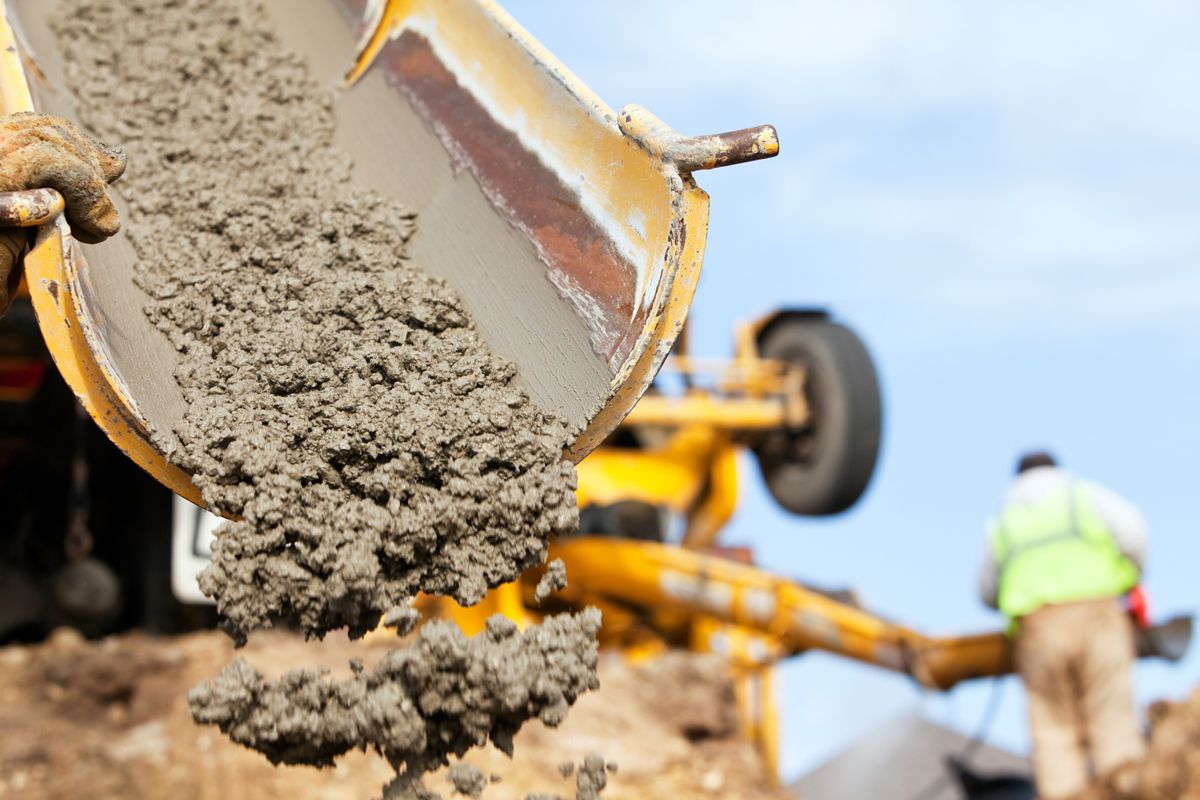Concrete has been a fundamental building material for thousands of years, tracing back to ancient Rome. Renowned for its versatility, strength and durability, it has seen relatively little change over time. But recent decades have ushered in significant technological innovations, particularly in response to climate change.
Two primary factors related to climate change are driving transformation within the concrete industry: the contributions of concrete to climate change and the need for concrete to adapt to its impacts.
Climate change is closely linked to global warming, which is driven by a marked increase in atmospheric greenhouse gases, notably carbon dioxide. While fossil fuel combustion is the leading source of elevated CO2 levels, cement production also plays a significant role. Cement acts as the binding agent that combines rock and sand to form concrete. Given that concrete is the second most consumed material globally, after water, its production accounts for an estimated 8% of global greenhouse gas emissions.
Cement is derived from limestone, and its manufacturing process involves a chemical reaction that releases CO2. Approximately 0.6 tons of CO2 are emitted for every ton of cement produced, a challenge that has prompted cement manufacturers to seek alternative solutions to reduce their carbon footprint. One approach involves enhancing energy efficiency by implementing advanced furnace technologies and utilizing low-emission energy sources.
Additionally, substituting traditional cement with alternative materials—such as fly ash, finely ground slag and unreacted limestone—has gained traction. These innovative measures have progressed to a point where the performance and quality of modern, low-carbon concrete can meet or even exceed traditional standards.
The quality and durability of concrete are essential for ensuring the structural integrity and longevity of buildings. Using eco-friendlier concrete that compromises on durability would undermine sustainability efforts, leading to increased maintenance and repairs—both costly and detrimental to a structure’s carbon footprint. For a concrete solution to be truly sustainable, it must endure for at least as long as intended while minimizing the need for upkeep.
Traditionally, enhancing concrete’s durability meant increasing the cement content, which, while effective, also raised its carbon emissions. Fortunately, there are other proven technologies available that enhance durability without relying on additional cement.
Another critical aspect to consider is how to address the repercussions of climate change. The frequency and intensity of extreme weather events are on the rise, presenting significant challenges for concrete structures. From heavy rainfall and flooding to extreme temperature fluctuations, these harsh conditions threaten to accelerate deterioration processes, such as erosion, salt scaling and corrosion of steel reinforcements, which can compromise concrete’s strength.
Elevated temperatures exacerbate these issues, while freezing temperatures and severe winter storms pose additional risks, leading to flooding and increased salt usage on roads that further contribute to corrosion.
Concrete’s inherent porosity makes it vulnerable, as its open pores facilitate water infiltration and the ingress of chlorides, leading to corrosion. Cracks in concrete make the problems worse because they allow water and harmful substances to get inside more easily. To address this issue, special additives called permeability-reducing admixtures (PRAs) have been developed.
These additives act like waterproofing agents, stopping water from getting in. One type, called crystalline PRAs, is especially effective because it reacts and forms crystals that fill in and seal any new cracks. This technology was created by Kryton International Inc. in 1980 and has become widely used around the world in the last 30 years.
Another consequence of climate change is rising sea levels, which threaten coastal infrastructure and increase erosion. Governments are investing heavily in constructing and reinforcing sea walls to protect against storm surges and rising tides. In this context, advanced technologies like PRAs and erosion-resistant admixtures are proving essential for extending the lifespan of concrete exposed to coastal conditions.
The necessity for stronger, more resilient concrete has never been clearer in the face of climate change. Traditional methods that rely on carbon-intensive cement are no longer viable.
Fortunately, advancements in concrete admixture technology offer the tools needed to produce exceptionally durable and sustainable concrete. The concrete industry, historically slow to innovate, is now undergoing a significant transformation toward greater sustainability.
Kevin Yuers is VP at Kryton International Inc. A veteran of the construction industry, he spent many years running his own contracting company before joining Kryton in 1994. Today, he is responsible for Product Development and Technical Services at Kryton. He spends most of his time providing customers with real-world solutions to their challenges throughout Kryton’s worldwide network. Yuers writes a weekly blog offering advice and comment on all things concrete related with focus on waterproofing, restoration and repair.












